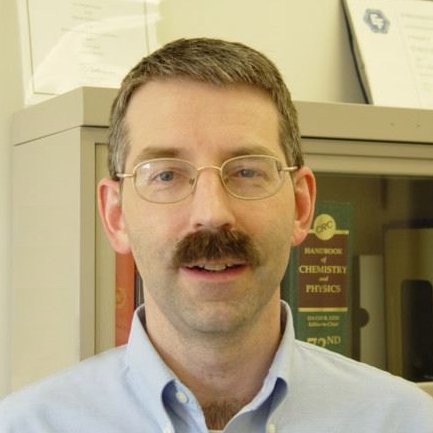Lectures
The Whys and Hows of Particle Size Characterization
Interpretation of particle size distribution data and techniques for sampling, sample splitting, and dispersion. Methods for laser diffraction and sieving, standard operating procedures
Details
March 1, 2024 3-3:50pm Virtual Lecture
Join Zoom Meeting
https://kansas.zoom.us/j/3259061254
Meeting ID: 325 906 1254
Speaker
David Scott, Ph.D.
Advanced Particle Sensors LLC
Wilmington, DE
About the Presenter

David Scott is a physicist with over 35 years of industrial experience in particle technology and process measurement. After his Ph.D., he focused on engineering research for 30 years at DuPont, where he led the particle characterization program and developed process sensor technology. He is (since 2003) a technical expert in ISO TC24/SC4, which develops international standards for particle characterization. He founded Advanced Particle Sensors in 2017 and consults for a variety of companies and organizations.
Applications of Separation in PFAS Analysis
Applications of Separation and Mass Spectrometric Techniques to Challenges in the Analysis of Per- and Polyfluorinated Alkyl Substances (PFAS) in the Environment
Details
May 8, 11am-12pm in the Beren Conference Center at Slawson Hall
KU Calendar
Speaker
Charles R. Powley, Ph.D.
Center for PFAS Solutions
New Castle, DE
Abstract
Per- and polyfluorinated alkyl substances (PFAS) are commonly referred to as “forever chemicals that are everywhere” due to their long persistence and poor adsorption to most surfaces due to their surfactant nature and non-stick properties. The documentary “The Devil We Know” and the movie “Dark Waters” have highlighted the specific instance of perfluorooctanoic acid (PFOA) contamination in the Parkersburg, WV area. However, there are over four thousand known PFAS, most of which we know little or nothing about in terms of health effects. The commercialization of liquid chromatography – tandem mass spectrometry (LC-MS/MS) with electrospray ionization around the year 2000 finally provided analysts with a quantitative tool that could detect levels of PFAS in water at part per trillion (ppt) levels, and at ppb levels in soils, sludges, sediments, and biota. Application of LC-MS/MS by academic, commercial, and industrial laboratories soon revealed how ubiquitous these compounds were in surface and ground waters, and even in human blood. Targeted analysis of 40 or more PFAS using LC-MS/MS has become common, with use of stable isotope internal standards and some novel sample preparation procedures for concentration and purification. Significant challenges involve contamination from a wide variety of fluorinated surfactants and fluoropolymers that can be introduced at all stages of the analysis, from sampling to instrumental determination. Non-target analysis of PFAS is a current growth area with high resolution mass spectrometry yielding particularly useful information, in addition to other approaches both established and under development. The goal is often source identification, which in many cases is not possible due to the wide variety of potential origins over the 70-year history of use. The current state of the art with applications from our laboratory and future directions will be presented.